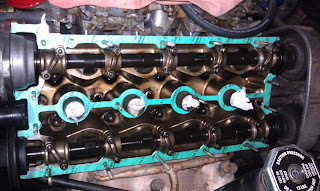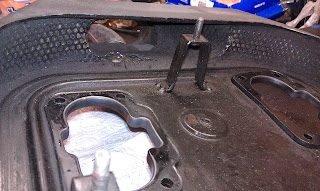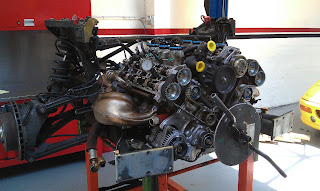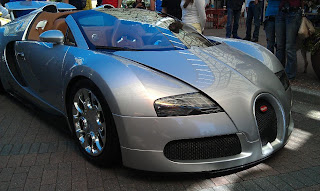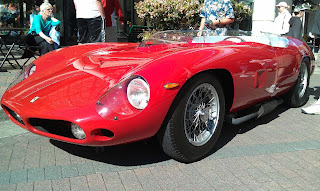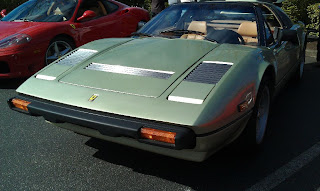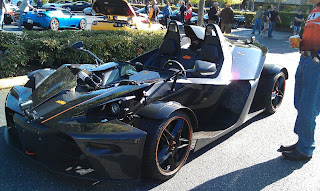Ok, next step in troubleshooting -- pull the plugs to see what they look like. Unburnt fuel in the exhaust means either too much fuel or incomplete ignition. I already checked the carbs and I think the mixture is good. Now let's check the ignition. Below are the plugs 1-4 (right to left).

Plugs 1/3/4 look ok, but have some deposits on them. Yikes, what's going on with plug #2? It's gotten really fouled from either running rich, leaking oil or a little of both. The original plugs I removed three years ago did not look like this. Perhaps they got fouled from all the fiddling I've done with the carb mixture. Anyhow, I'll replace the plugs and now's a good time to finally put in those new Accel 8mm ignition wires that have been sitting on a shelf. Perhaps I had a bad ignition wire leading to poor combustion.

The wire connection a the plugs is pretty much standard, but the way the wires attach to the distributor cap is very unique. The wires fit into a hole in the side of the cap and there is a sharp screw that enters the post and pierces the wire to make the connection. There are 2 different lengths used at different thickness of the cap.


The main reason I got these wires was they allow elimination of the OEM spark plug extenders. The stock setup is the ignition wire connecting to an extender which then reaches way down into the spark plug hole to connect to the end of the plug. These extenders are notorious for going bad. Someone on Fchat posted about this Accel wire set which I think is originally for a Honda Vtec engine. The only thing is that they are too long out of the box. All I had to do though was to cut off about an inch on the extension. It fits pretty well in the plug hole and this solution is about 1/10 the cost of OEM wires.

With the plugs out, it was a good time to do a compression test. SL and I did the test with me doing the cranking and him looking at the gauge. The numbers we got seemed a little low, but I realize now that I forgot to hold open the throttle while doing the test. Anyhow, I was less interested in the actual numbers as I was consistency across cylinders. The difference between the high and low values was only 7% so I'm going to call that good.
One other thing to check while I'm back there is the valve clearances. Another possibility for running hot and incomplete combustion is too tight of clearance on the exhaust valves. So, off comes the rear cam cover to gain access to the valve train.

The factory spec on a 2-valve engine is 0.008-0.010" on the intake and 0.012-0.016" on the exhaust. I checked all the valves twice and the all the exhaust valves are within spec. All the intake valves are a little tight by about 0.002-0.003".

Lastly, since the cam cover is off and I can see the cam position, I did a leakdown test. I'm using a cheapo Harbor Freight leakdown tester, which is really hard to calibrate to get a leakdown number. However, like with the compression test, I was less concerned about the actual numbers than I was consistency. All 4 cylinders in the rear bank showed about the same level of leakage. With a garden hose to my ear, I could tell that all cylinders showed leakage out the rings and little to none out the exhaust valves. No detectable leakage out the intake valves, except for #1 which I could clearly hear leaking out the carb throat.
Conclusion? Aside from the bottom end being tired and some leakage in one intake valve, things seem to be ok (not good, not great, just ok) in the rear bank. I can't explain the ugly #2 plug so all I can do it put in new plugs and put it all back together. Maybe the new wires and plugs will reduce any incomplete combustion and keep the cat cooler.
to be continued...








